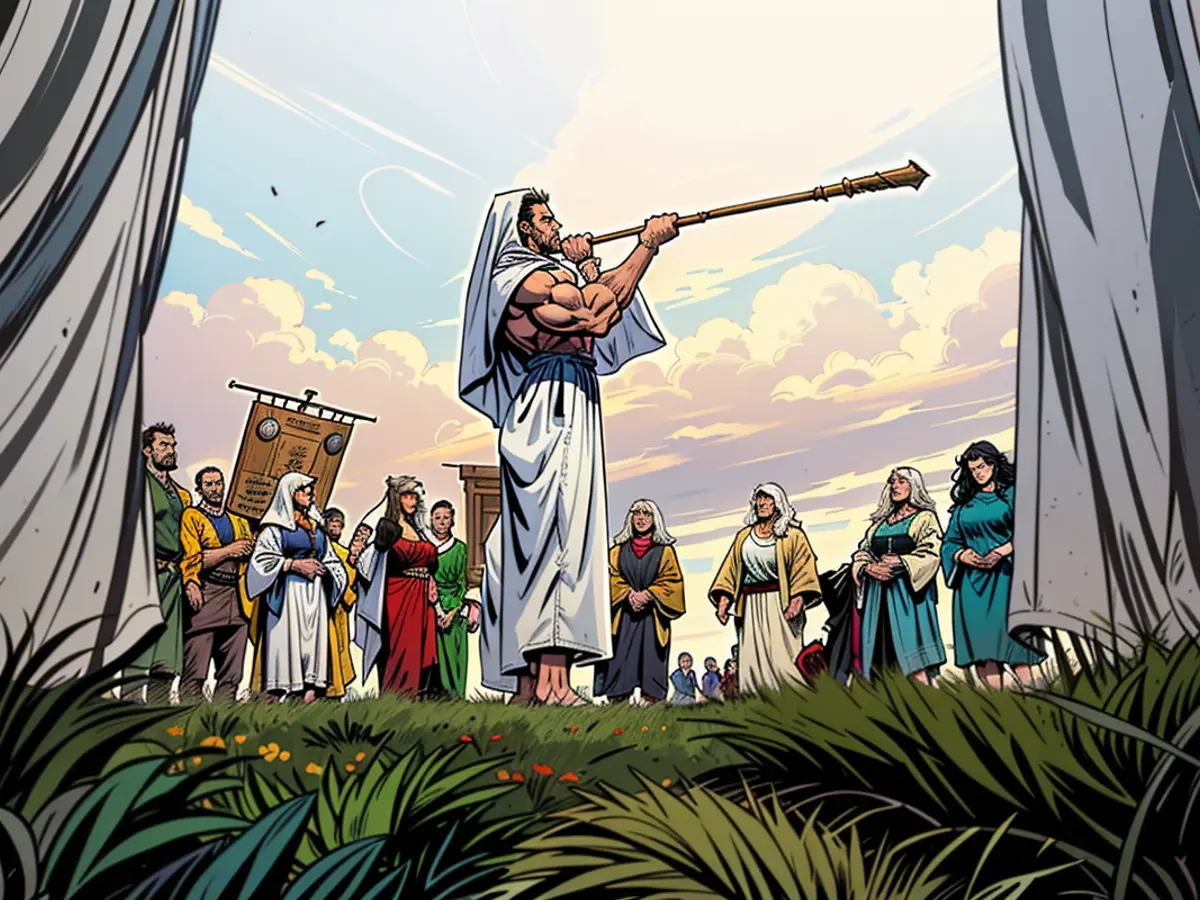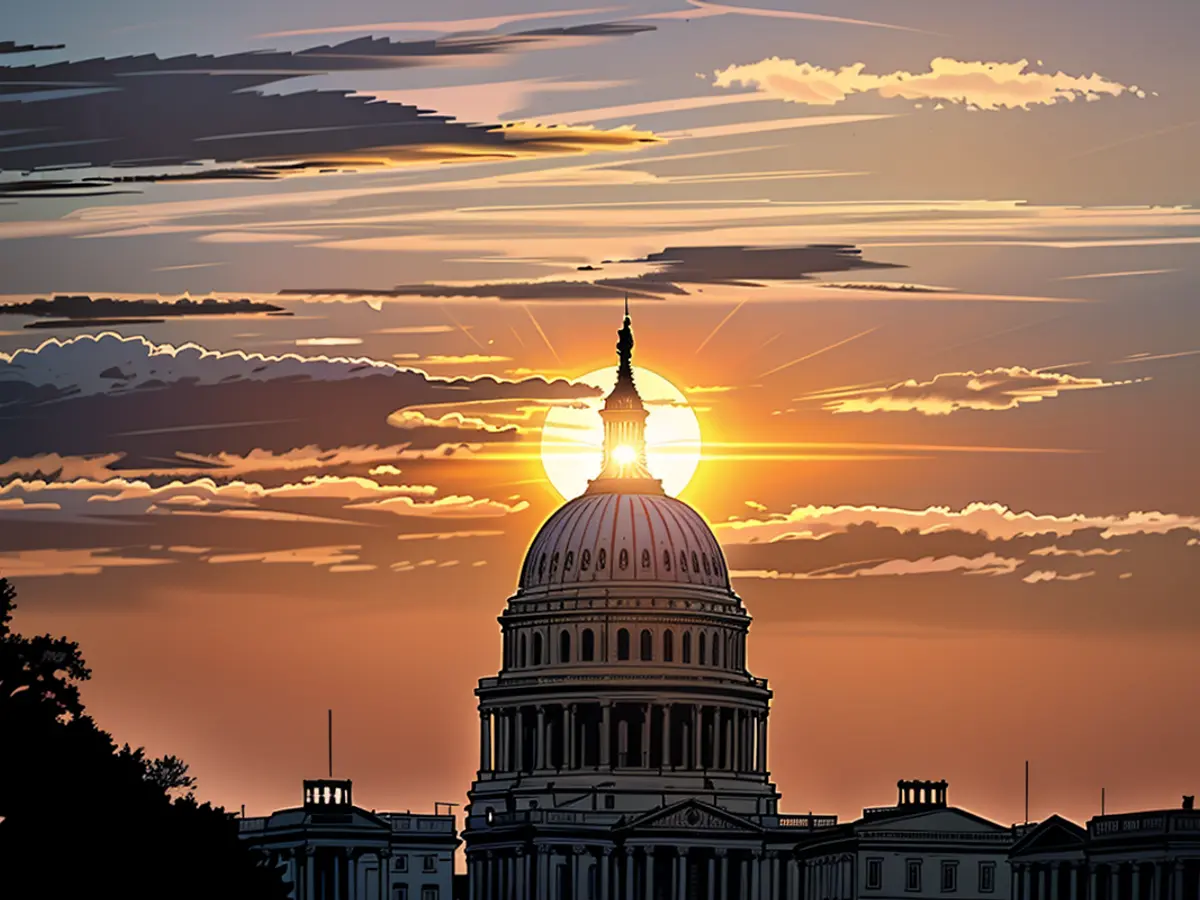The misconception of balance on the first day of fall during the fall equinox
This Sunday marks our second and final equinox of 2024. If you're residing in the Northern Hemisphere, you recognize it as the autumn equinox (or fall equinox). On the other hand, individuals dwelling south of the equator view this equinox as the herald of spring.
The location on Earth significantly influences the local time and even the date that you experience the fall equinox. The majority of the world's population will observe it this year on September 22, Sunday, at 12:44 UTC (Coordinated Universal Time).
Individuals near the equator will barely notice any changes, with roughly 12-hour days and 12-hour nights throughout the year. However, those residing close to the poles, such as Alaska, Canada, and Scandinavia, witness dramatic shifts in the day/night ratio each year. They experience prolonged, dark winters followed by a midnight sun during the summer solstice, when night barely encroaches.
During the equinox, everyone from pole to pole gets to enjoy a 12/12 split of day and night. Unfortunately, it’s not as perfectly "equal" as one might think.
There's a cause for why one doesn't obtain precisely 12 hours of daylight during the equinox. You can learn more about that below.
Here are some answers to fall equinox-related questions:
From where does the term 'equinox' originate?
According to the CNN Fast Facts file, the term equinox comes from the Latin word equinoxium, meaning "equality between day and night."
Exactly when does the fall equinox take place?

The equinox will occur at 12:44 UTC Sunday, September 22.
For cities such as Montreal and Richmond, Virginia, this time translates to 8:43 a.m. local time. It comes at 7:43 a.m. in St. Louis and 6:43 a.m. for Mexico City. The westward journey continues with 5:43 a.m. for Seattle.
Heading opposite directions across the Atlantic Ocean, residents of Amsterdam and Split, Croatia, will officially acknowledge the event at 2:43 p.m. Sunday. Dubai, in contrast, marks the exact moment at 4:43 p.m.
Residents of Hong Kong observe it at 8:43 p.m., while Tokyo clocks in at 9:43 p.m. You can click here to input your city.
Is the autumn equinox the official first day of fall?
Yes. Fall officially begins on the autumn equinox.
However, there are two methods to measure the seasons: "the astronomical seasons" (which follow the equinox and solstice arrivals) and the "meteorological seasons."
Allison Chinchar, a CNN meteorologist, explains the differences:

"Astronomical fall is essentially the time period from the autumnal equinox up to the winter solstice. These dates can vary by a day or two each year," she says.
"Meteorological fall is different ... in that the dates never change and are based on climatological seasons rather than Earth's position relative to the sun. These are perhaps the seasons that more people are familiar with," Chinchar says.
Meteorological seasons are defined as follows: March 1 to May 31 is spring; June 1 to August 31 is summer; September 1 to November 30 is autumn; and December 1 to February 28 is winter.
"This makes some dates tricky," Chinchar says. "For example, December 10, most people would consider winter, but if you're using the astronomical calendar, technically that is still considered autumn because it is before the winter solstice."
She stated that "meteorologists and climatologists prefer to use the ‘meteorological calendar’ because not only do the dates not change – making it easy to remember – but also because it aligns more with what people believe are traditional seasons."
Why does the fall equinox occur?
The Earth revolves along an imaginary line from the North Pole to the South Pole, which is called the axis. This rotation results in day and night.
However, the axis tilts at 23.5 degrees, as explained by NASA. This tilting positions one hemisphere of the planet to receive more sunlight than the other for half of the year's orbit around the sun. This disparity in sunlight is what triggers the seasons.

The effect is strongest in late June and late December. These are the solstices, which have the most extreme differences between day and night, notably at the poles (that's why it remains light for so long during the summer in places such as Scandinavia).
Since the summer solstice in June, days have been progressively becoming shorter in the Northern Hemisphere, while nights have grown longer for the last three months. Welcome to the fall equinox!
What did our ancestors realize?
Well before the age of clocks, satellites, and modern technology, our ancient ancestors had a deep understanding of the sun's movement across the sky – enough to construct massive monuments and temples that served not only religious purposes but also as giant calendars to mark the seasons.
Here are just a few notable sites connected to the equinox and the sun's annual movement:
• Stonehenge (United Kingdom): Many mysteries surround these large slabs, but we do know they are perfectly aligned to track the yearly passage of the sun.
• Maltese Megalithic Temples: Situated on the Mediterranean island, these seven structures are among the earliest freestanding stone constructions globally, dating back 5,000 to 6,000 years. At Hagar Qim and Mnajdra, the semi-circular chambers are arranged so that the sun at the equinox's rising is encased between the stones.
• Chichen Itza (Yucatan Peninsula, Mexico): Chichen Itza's famous pyramid, El Castillo, puts on a striking spectacle during equinoxes. Built by the Toltec-Maya between 1050 and 1300, this pyramid was designed to cast a shadow during equinoxes on El Castillo's northern balustrade. The appearance of a slithering snake descending the stairs is created, with the ancient special effect enhanced by sculpted beast heads at the base.

• Jantar Mantar (New Delhi, India): Although much more recent in origin (1724 and 1730), these buildings from the end of the Mughal period serve as astronomical observatories.
What are some fall equinox events and traditions?
Worldwide, the fall equinox has permeated various societies and celebrations.
In Greek mythology, the fall equinox signifies the return of the goddess Persephone to the underworld for three months, where she reconnects with her spouse, Hades.
Festivals centered around harvests in Great Britain have roots in the fall equinox, dating back to ancient pagan times.
Chinese and Vietnamese people still celebrate the Harvest Moon (also known as the Mid-Autumn Festival). Streets are adorned with lanterns as people express gratitude, marvel at the moon, and devour mooncakes – a popular Mid-Autumn Festival delicacy. This festival takes place on the 15th day of the eighth lunar month of the Chinese calendar, which was marked on September 17 this year.
In Japan, Autumnal Equinox Day is a national holiday. In Japanese, it is known as Shubun no Hi (秋分の日), as per Coto Japanese Academy. The celebration origin can be traced back to Shintoism and Buddhism.
So why isn't the equinox perfectly equal?

Surprisingly, there's slightly more daylight than darkness during the equinox, depending on one's location on Earth. What causes this discrepancy?
The slightly unequal hours of day and night are due to the intricate method of measuring a sunrise and the refraction of sunlight within our atmosphere.
This bending of light rays causes the sun to appear above the horizon even when the sun's actual position is below the horizon. The day is longer at higher latitudes because the sun takes longer to rise and set as you approach the poles.
As a result, the length of day on the fall equinox will vary slightly based on one's location. Here are some approximations:
• At the equator: Approximately 12 hours and 6 minutes (Quito, Ecuador)
• At 30 degrees latitude: Approximately 12 hours and 8 minutes (Cairo, Egypt)
• At 60 degrees latitude: Approximately 12 hours and 14 minutes (Helsinki, Finland)
The day and night divide is truly equal only after a few days following the official equinox. This phenomenon is referred to as equilux. When the equilux occurs for you hinges on your latitude, according to timeanddate.com. The closer one is to the equator, the later the fall equilux date.

At the equator itself, the equilux event never takes place because of the atmospheric refraction of sunlight, which always results in a slight excess of daylight over darkness.
The autumn equinox, also known as the fall equinox, is a significant event for people living in the Northern Hemisphere, marking the start of fall. This event offers everyone around the world an opportunity to experience a 12/12 split of day and night.
Planning a trip during this period could be an excellent way to witness diverse annual changes in day and night ratios across various locations. For instance, individuals residing close to the poles, such as Alaska, Canada, and Scandinavia, experience stark contrasts between prolonged winters and summer solstice's midnight sun when night barely encroaches.
Read also:
- Fear of escalation in the Middle East: US Secretary of State Blinken travels to the region again
- Government circles: US Secretary of State Blinken to travel to Middle East again
- Bridging days 2024: How you can double your vacation this year
- Germany has wanderlust: how tour operators and airlines are looking ahead to the next travel year








